Wren’s Wonders in Precious Metal: The Captivating Sir Christopher Wren £5 Coin Range
Step into the world of architectural brilliance with the all-new Sir Christopher Wren £5 coin range. This remarkable collection pays homage to the visionary architect and encompasses a diverse set of offerings that will leave enthusiasts and collectors alike in awe. From the meticulously crafted Proof £5 coin to the elegant Silver Proof £5, the substantial Silver Proof 5oz, and the opulent Gold Proof £5, this range showcases the mastery of design.
Step into history with the Proof £5 Sir Christopher Wren coin, a limited edition masterpiece of only 4995 pieces. This coin features a compilation of Wren’s iconic buildings, from the majestic St. Paul’s Cathedral to the elegant Royal Observatory.
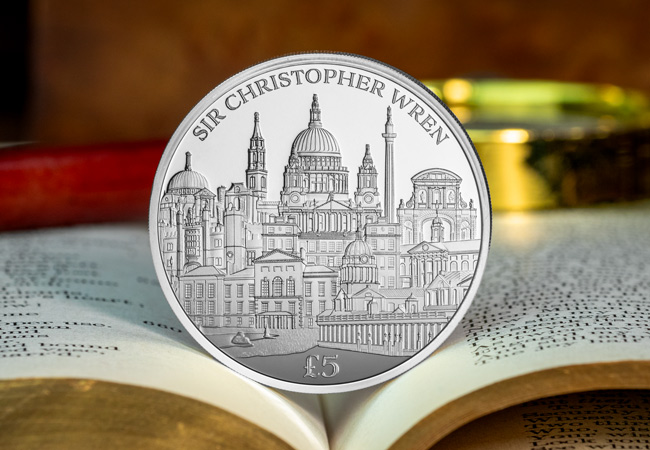
Continuing our journey through architectural history, the Silver Proof £5 Sir Christopher Wren coin takes us deeper into the genius of this visionary. Limited to just 995 pieces, this coin is a testament to Wren’s legacy. What sets it apart is the meticulous selective 24-carat gold plating, which highlights the intricate details of Wren’s iconic designs, building upon the foundation set by the Proof £5 coin.
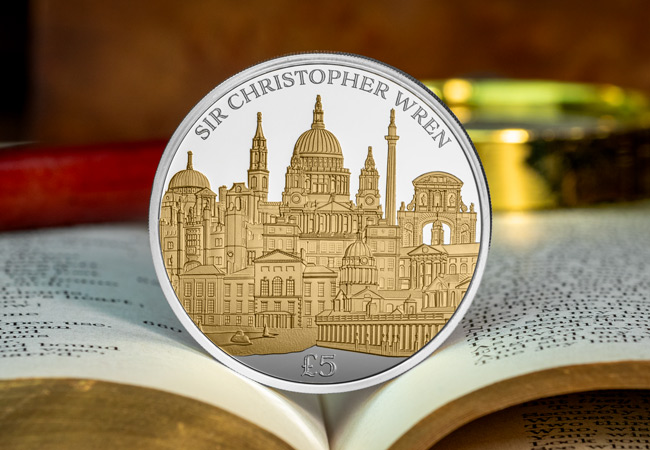
Dive deeper into architectural splendor with the Silver Proof 5oz Sir Christopher Wren coin. With a limited release of just 100 coins, this edition is a true masterpiece of inclusivity. Building on the foundation laid by its predecessors, this coin boasts a substantial 65mm diameter, allowing for an even more intricate portrayal of Wren’s masterpieces.
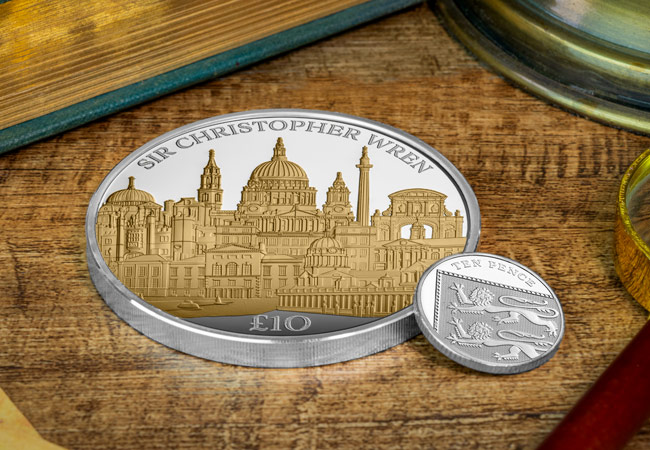
And now, the pinnacle of the collection awaits: the Sir Christopher Wren Gold Proof £5 coin. Limited to just 50 pieces and struck from 24-carat gold, this coin is the epitome of opulence and prestige. Each glint of gold reflects the depth of his legacy, a limited treasure that captures the essence of his architectural marvels in every stroke.
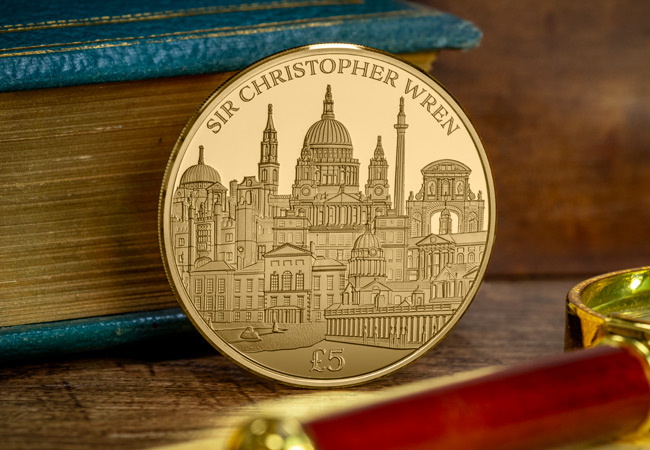
Embrace the legacy of Sir Christopher Wren through this remarkable coin collection. Whether you’re an avid collector or a history enthusiast, these coins offer a tangible connection to the past. Don’t miss your chance to own a piece of Wren’s genius.
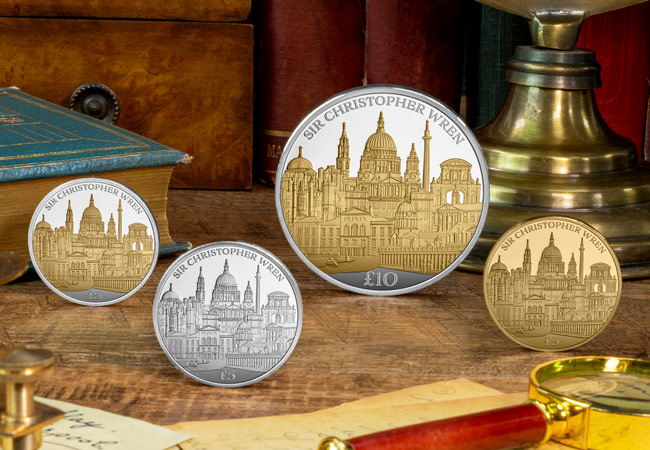
Click here to explore the range and secure your own slice of history today.
The Olympic and Paralympic Coin Revolution – and how you can own them ready for 2024!
How long have you been collecting for?
If you’ve been building out your own collection over the past decade, you would’ve almost certainly heard of the collecting revolution that is Olympic and Paralympic Coins.
The London 2012 Olympic 50p Coins
Cast your mind back to 2012 – The London 2012 50p coin series consisted of 29 different designs, each representing a different Olympic event such as athletics, swimming, gymnastics, cycling, and more, each designed to capture the essence of the respective sport.
These coins were released in batches throughout the years leading up to the Games, starting in 2009 and continuing until 2011. And out of the 29 million London Olympic and Paralympic 50p Coins that entered circulation, collectors managed to claim an astounding 75% of them!
This solidified their status as highly sought-after rarities…
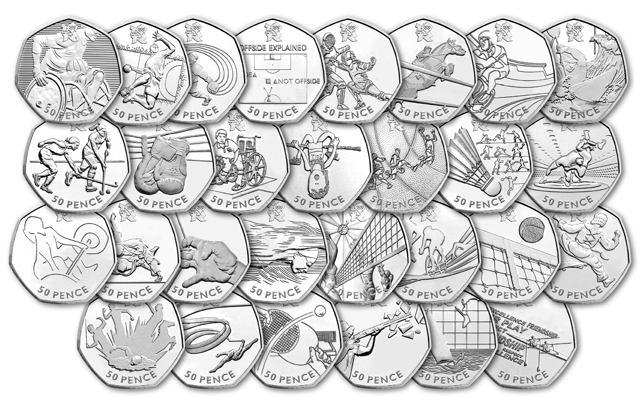
In addition to the Olympic 50p coins, there were also two special 50p coins produced to celebrate the Paralympic Games, which took place in London immediately after the Olympics. These coins featured wheelchair rugby and goalball designs.
The Rio 2016 Olympic and Paralympic £2 Coins
Fast forward to the Rio 2016 Olympic and Paralympic Games, and as you can imagine, another collecting revolution took hold. Thousands of collectors scrambled to get their hands on the newly issued coins.
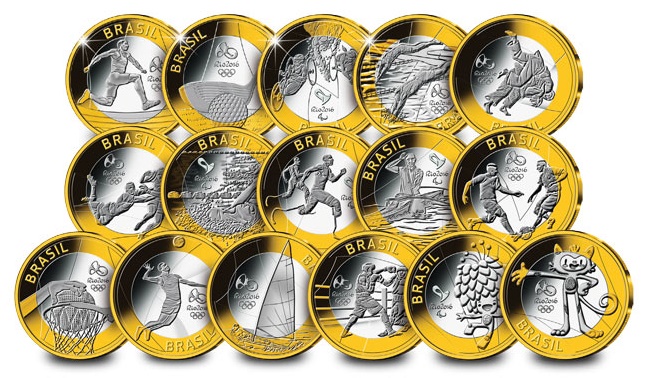
Just 16 circulating coins were issued for Rio 2016. It was an opportunity few people will ever have without travelling to Brazil themselves.
It’s become evident that collectors are eager to commemorate Olympic and Paralympic Games – events which are firmly stored in the history books, celebrating athletes who grace the world stage.
And as you may already know, the magic of the Olympic and Paralympic Games is set to unfold once more in Paris next year…
The Paris 2024 Olympic and Paralympic Coins
It’s been 100 years since Paris last hosted the Olympic Games, making the Paris 2024 Olympic and Paralympic Games even more historically and culturally significant.
Thanks to our long standing relationship with La Monnaie de Paris, the official partners of the Paris 2024 Olympic and Paralympic Games, The Westminster Collection are able to bring the specially released coins celebrating the event to collectors here in the UK.
We’ve been lucky enough to secure a small allocation of these coins, celebrating each sport in the games a year before they begin in Paris…
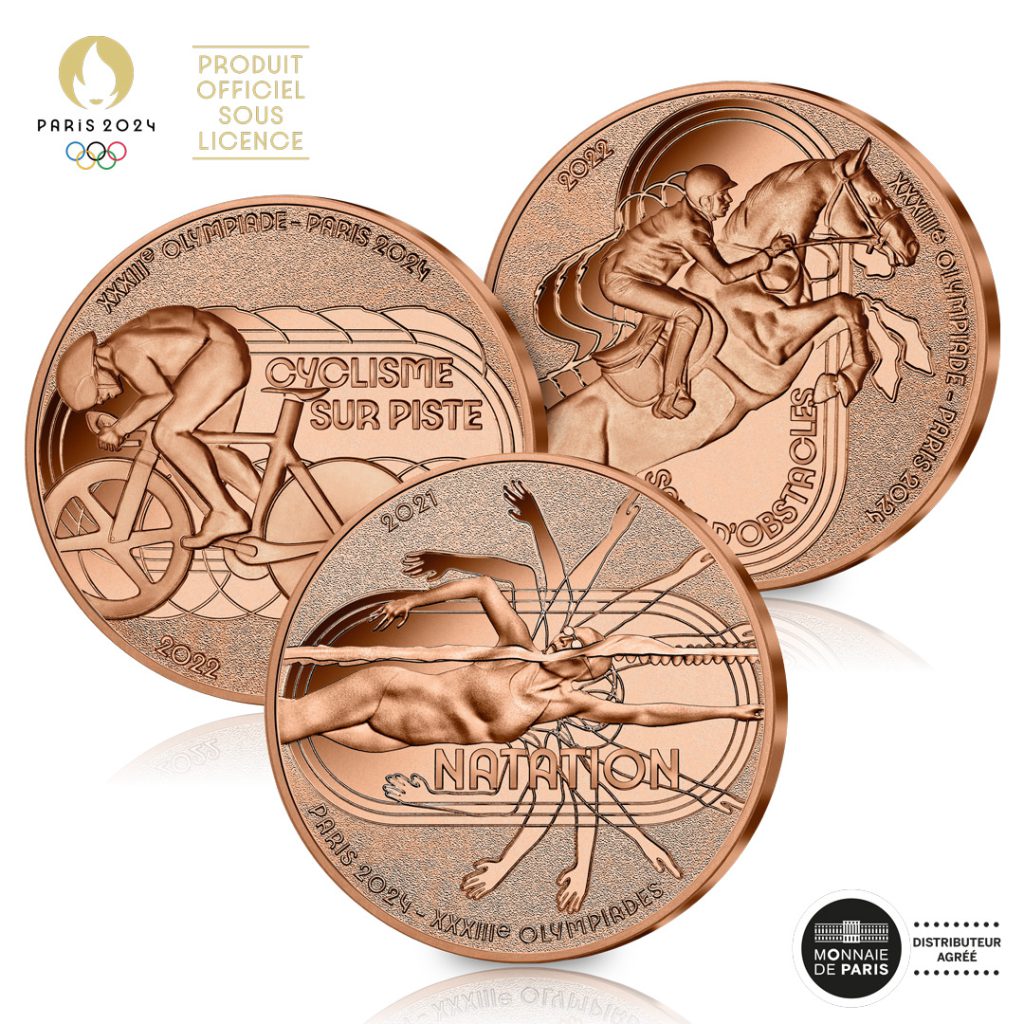
If previous demand is anything to go by, we expect thousands of collectors have been eagerly anticipating this release, seeking to build on their Olympic and Paralympic Coin collections.
Click here to find out more about the BRAND NEW Paris 2024 Olympic and Paralympic Coins >>
New UK £2 released featuring Ada Lovelace
When you think of the original pioneers of computer science, names like Charles Babbage and Alan Turing might come to mind.
But what if we were to tell you that there was someone else who played a pivotal role in building the foundations of modern computing – Ada Lovelace.
Nicknamed ‘The Enchantress of Numbers’ by Charles Babbage himself, Ada Lovelace is the next innovator in science to be honoured on a brand-new UK £2.
First, let me take you back…
A Mathematical Talent
Ada Lovelace was born in Victorian England and quickly gained an interest in mathematics and science. At the age of just 18, Ada’s mathematical talent secured her a working position alongside ‘The Father of Computers’ himself, Charles Babbage.
This allowed Ada to focus her work on something revolutionary: Babbage’s Analytical Engine – the first ever computer.
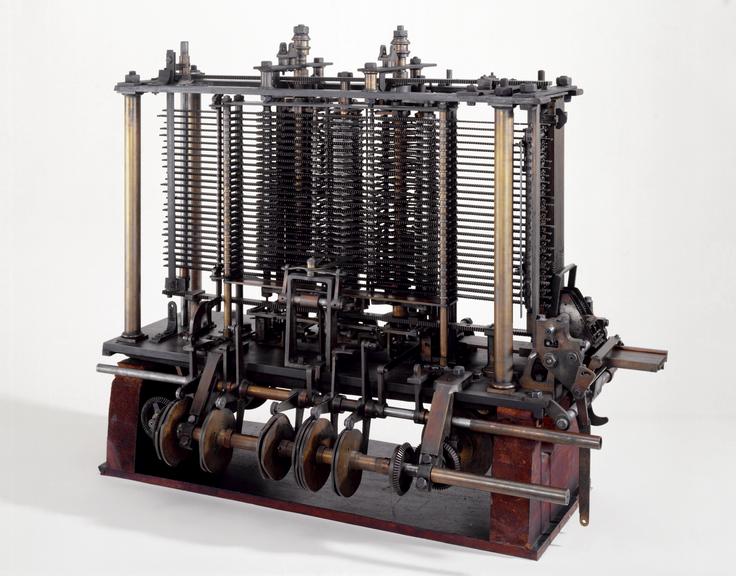
A Visionary of the Computer Age
At the time, Charles Babbage and other scientists only focused on the numerical and calculating abilities of the famous Analytical Engine. But, Ada Lovelace had other ideas…
She was a critical thinker and knew that the computer had the possibility to go beyond number-crunching; she interpreted the machinery further than anyone else was even considering at the time…
Ultimately, she concluded that the Analytical Engine could manipulate more than just numbers. In fact, it could be used for letters, symbols, and most importantly – instructions.
This built the foundations of modern computing as we very know it.
Ada Lovelace’s revolutionary contributions were revealed to the industry in 1843 in the form of seven ‘Notes’. In these Notes, Lovelace provided comprehension, calculations and inputs about the machine and its abilities – resulting in her title as the first ever computer programmer.
And now, to honour such a revolutionary mindset, Ada Lovelace is being celebrated on a brand-new UK £2 coin.
The Ada Lovelace £2 Coin Range
Commemorating Ada’s contributions to computer science, she’s earnt herself a well-deserved place in The Royal Mint’s popular Innovation in Science coin series.
With a design that depicts the original punch cards that were used to programme the Analytical Engine, the coin’s reverse also reads a quote from Lovelace herself – “a discoverer of the hidden realities of nature”.
What’s more, this UK £2 coin range comes in a range of specifications…
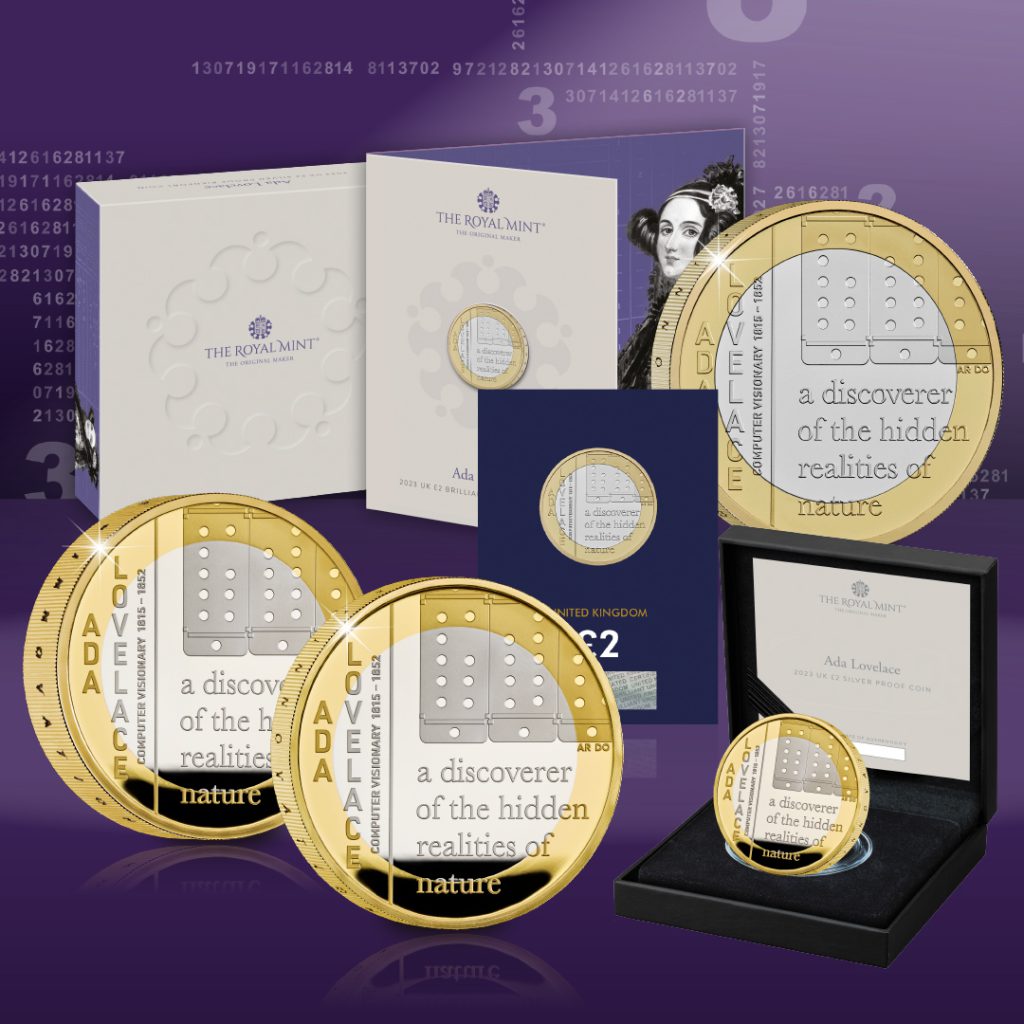
From the collector’s favourite – Brilliant Uncirculated quality – to the stunning Silver Proof and Silver Piedfort specifications, there’s something for everyone.
But be warned – with extremely low edition limits and even less for Westminster Collectors, you’ll have to act fast to secure yours!
